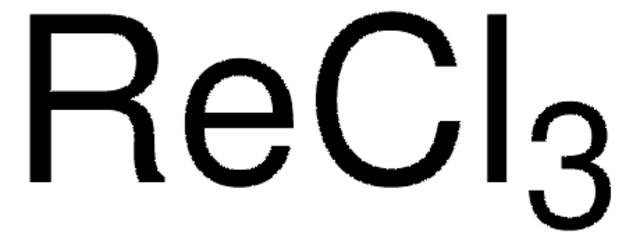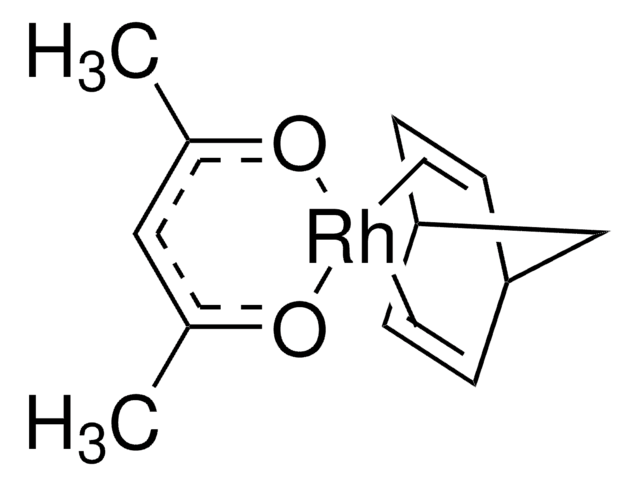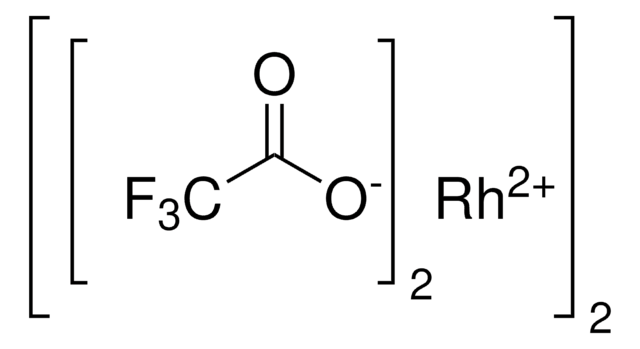206261
Rhodium(III) chloride hydrate
Rh 38-40 %
Synonym(s):
Rhodium trichloride hydrate
About This Item
Recommended Products
form
powder or crystals
Quality Level
composition
Rh, 38-40%
reaction suitability
core: rhodium
reagent type: catalyst
mp
100 °C (dec.) (lit.)
SMILES string
O.Cl[Rh](Cl)Cl
InChI
1S/3ClH.H2O.Rh/h3*1H;1H2;/q;;;;+3/p-3
InChI key
HSSMNYDDDSNUKH-UHFFFAOYSA-K
Looking for similar products? Visit Product Comparison Guide
Application
Signal Word
Danger
Hazard Statements
Precautionary Statements
Hazard Classifications
Acute Tox. 4 Oral - Aquatic Acute 1 - Aquatic Chronic 1 - Eye Dam. 1 - Met. Corr. 1 - Muta. 2
Storage Class Code
8A - Combustible corrosive hazardous materials
WGK
WGK 3
Flash Point(F)
Not applicable
Flash Point(C)
Not applicable
Personal Protective Equipment
Choose from one of the most recent versions:
Already Own This Product?
Find documentation for the products that you have recently purchased in the Document Library.
Customers Also Viewed
Global Trade Item Number
| SKU | GTIN |
|---|---|
| 206261-250MG | 4061838768575 |
| 206261-10G | 4061838768551 |
| 206261-1G | 4061838768568 |
| 206261-25G | 4061833397961 |
| 206261-5G | 4061835508563 |
Our team of scientists has experience in all areas of research including Life Science, Material Science, Chemical Synthesis, Chromatography, Analytical and many others.
Contact Technical Service
















